When it comes to food, one fact that will ride out any of the latest fads and trends is that more fruit and veg in your diet can only be a good thing. The government target of five-a-day has entered common parlance and become a key step in raising awareness. The food writer Michael Pollen probably puts the best advice most succinctly when he says: “Eat food. Not too much. Mostly plants.” But how to start the change?
The first real step to getting more veg into your diet is to fall in love with the stuff. Learn to appreciate the taste and textures and how to cook and combine it in interesting and enticing ways. Don’t see it as a set of tick-list targets; anything that becomes too dogmatic risks turning the whole thing into a joyless chore.
Start with what you know
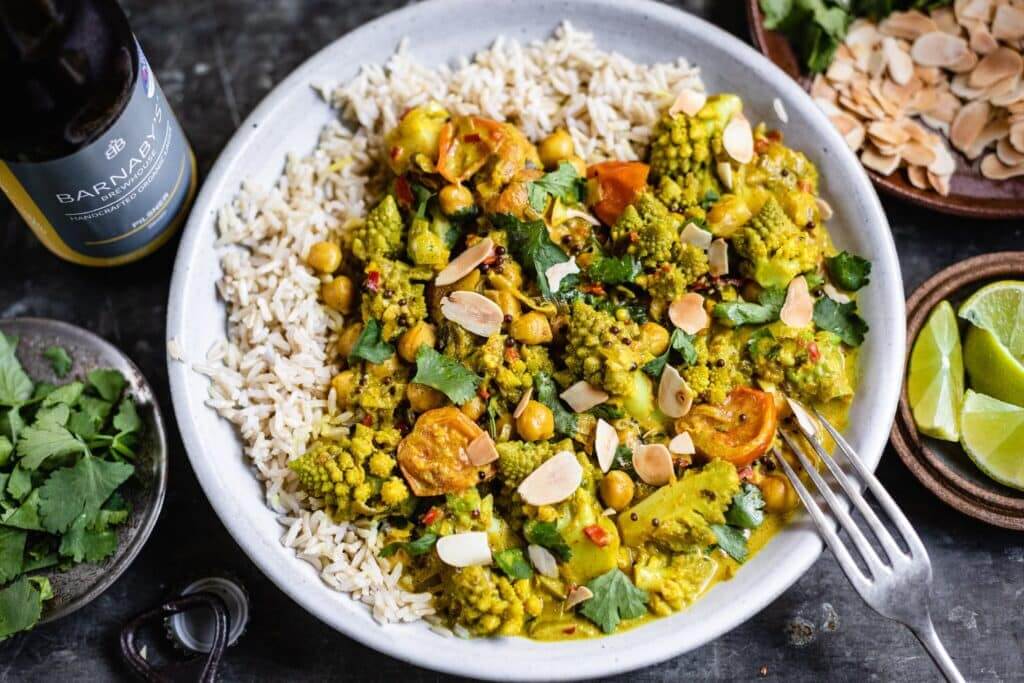
Start by eating a little more of what you are familiar with and try expanding your repertoire from there. Veg can be roughly grouped along varietal and family lines; the chances are that the things you like sit in a closely related spectrum of equally delectable relations. If you are a fan of broccoli, then it is likely that you would welcome the taste and texture of other floreting brassicas such as cauliflower or the hypnotically-spiralled Romanesco. The clean, peppery crunch of a radish could be the gateway to kohlrabi, daikon or even the much-maligned turnip. It isn’t too far a leap from a butternut squash to a sweet potato and from there to sweet roots such as parsnips and celeriac.
Dislike it? Think again
Most people have certain veg that they have decided they dislike from an early age. Try revisiting these veg with a fresh perspective. It is more than likely to be the preparation that is the problem rather than the veg itself. If your bad memories of beetroot are sliced and pickle in malt vinegar, then you may want to try it grated through a slaw or salad, roasted in generous chunks with a little orange and caraway or thinly sliced into a root gratin. The ghoulish spectres of miasmic cabbage and sludgy, grey spinach may be exorcised by nothing more than a shorter cook time, some thoughtful seasoning and a restrained squeeze or two of lemon.
Cook from scratch
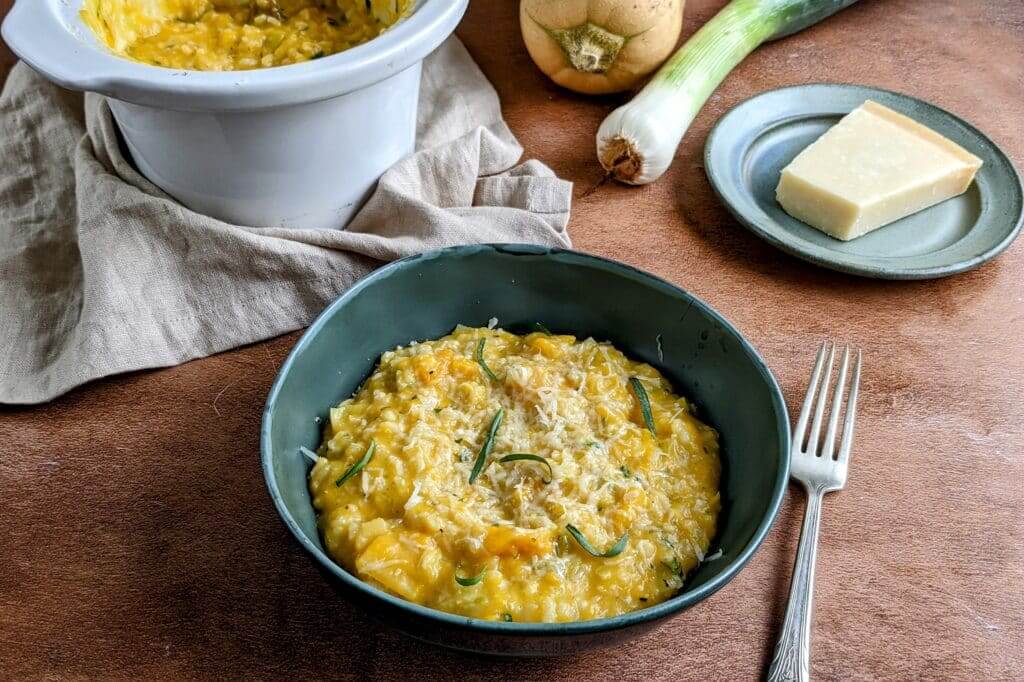
Finding the time to cook from scratch a few times a week will almost inevitably bring more fresh ingredients into your obit. The more you cook the more comfortable you will become with the trimming, peeling and prep; you may even come to enjoy it. Some tasks, such as podding beans or peas, can have a strange meditative quality to it (for anything less than a kilo). If you are unsure to start with, just add the veg as a side to your meals, some wilted greens for example, or increase your usual veg elements. Maybe then move on to incorporating some veg into classics dishes: a mac and cheese with or cauliflower folded through, a curry or stew finished with some spinach or finely shredded kale, or a risotto completed with sweet, fudgy chunks of squash. As the cooking bug bites, you may find yourself starting to seek out the more obscure and fringe varieties as a culinary challenge. Trying a new veg every few weeks isn’t too unrealistic a goal to set yourself; if you can try cooking it in a variety of ways, all the better.
Break your habits
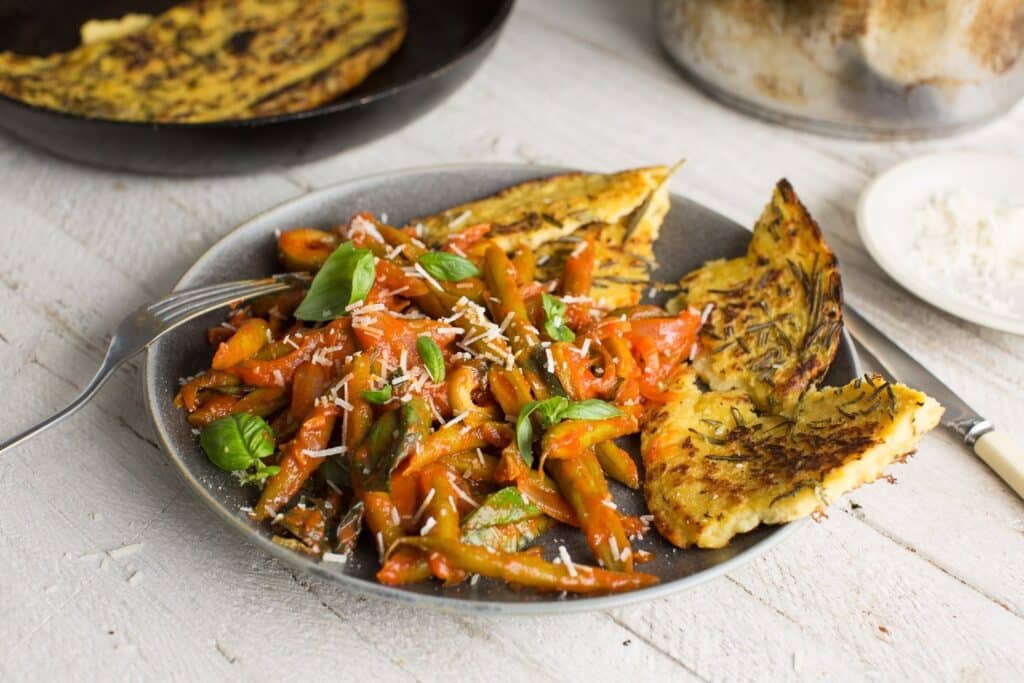
To embrace the veg it may mean you have to break a few habits – at the shops, in the kitchen cupboards and at the stove. More fresh produce is a must, just make it at the expense of processed foods and ready meals. A weekly veg box delivery is a good way to ensure an interesting variety and can push you to use things you may have otherwise avoided. Try and track the seasons where and when you can. Parsnips taste best in the winter, asparagus in the spring, sweetcorn in the summer and squash in the autumn. The biggest difference will come in cooking in ways you may not have considered before – try roasting some broccoli or cauliflower instead of boiling it, using parsnips or squash to make your mash instead of potatoes, or slow cooking something that would usually cook lightly; green beans, courgettes and fennel all react well to some low heat and extra time. Likewise, consider that many things are as delicious raw as they are cooked and offer a different taste and texture too.
Three meals a day
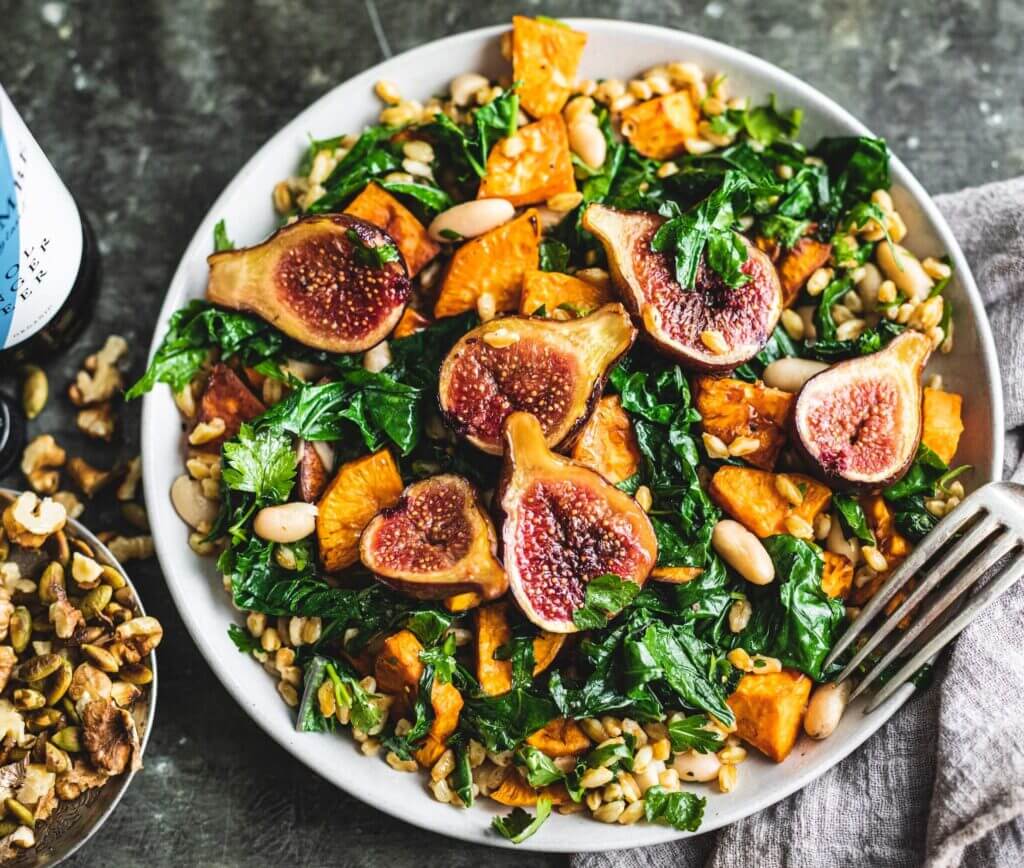
It may sound daunting but try and think about a bit of fruit or veg in each meal of the day; it isn’t as much of a chore as you may think. Breakfast granola can rarely go wrong with some sliced or diced fruit in the mix. Try some ripe avocado on your toast as an occasional change to the marmalade or marmite. There is an increasing craze for juices, smoothies and blends that allow you to squeeze or blitz fruit and veg into a quick and convenient glassful. Lunch could be as simple as folding some mixed salad leaves and grated carrot into your sandwich or making a packed lunch with some veg at its heart. Soup is an obvious choice but don’t discount the fact that you can build robust salads that would happily fill the midday gap. At dinnertime consider bringing veg off the side-lines and make it the star of the dish. The need to eat less meat in our diet is becoming increasingly apparent for both health and environmental reasons, try using it less as the main event and fill the gap with pulses, legumes and plenty of veg instead. Maybe start with ‘Meat Free Mondays’ and see how you go from there.
Trying to eat less meat? Find our sister guide on how to eat less meat.

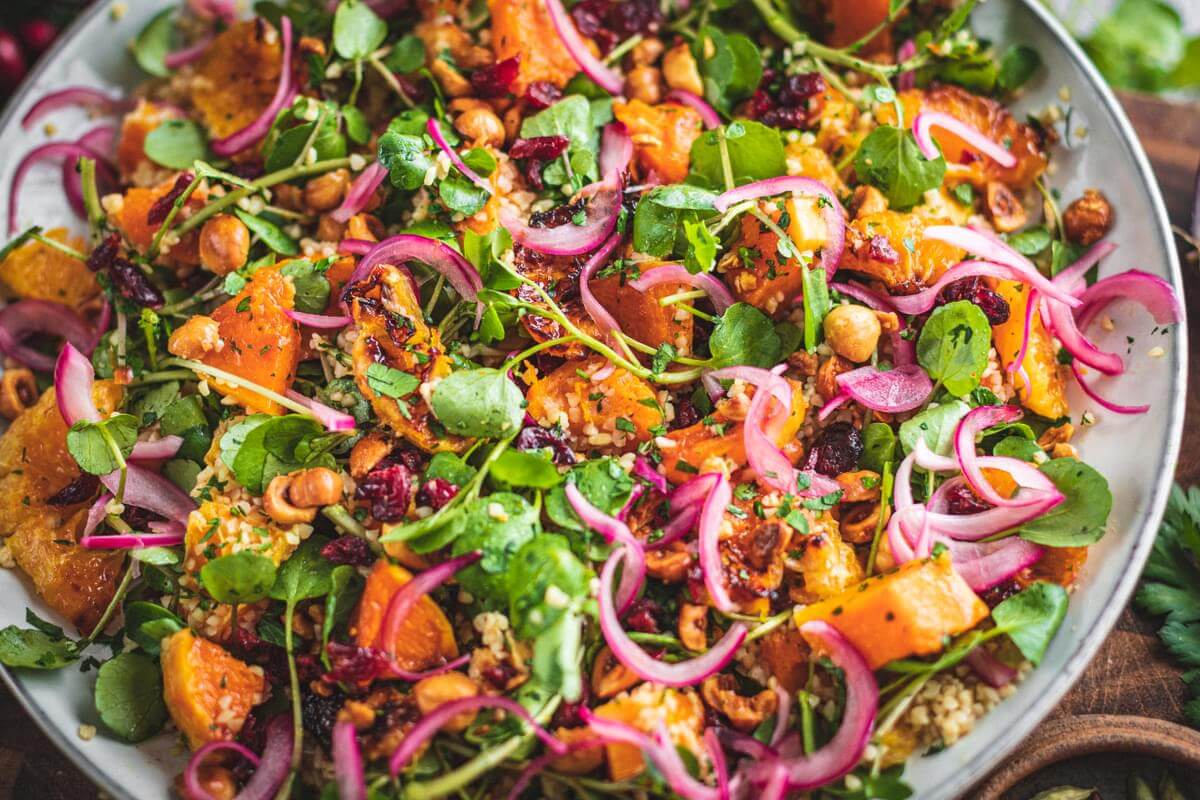

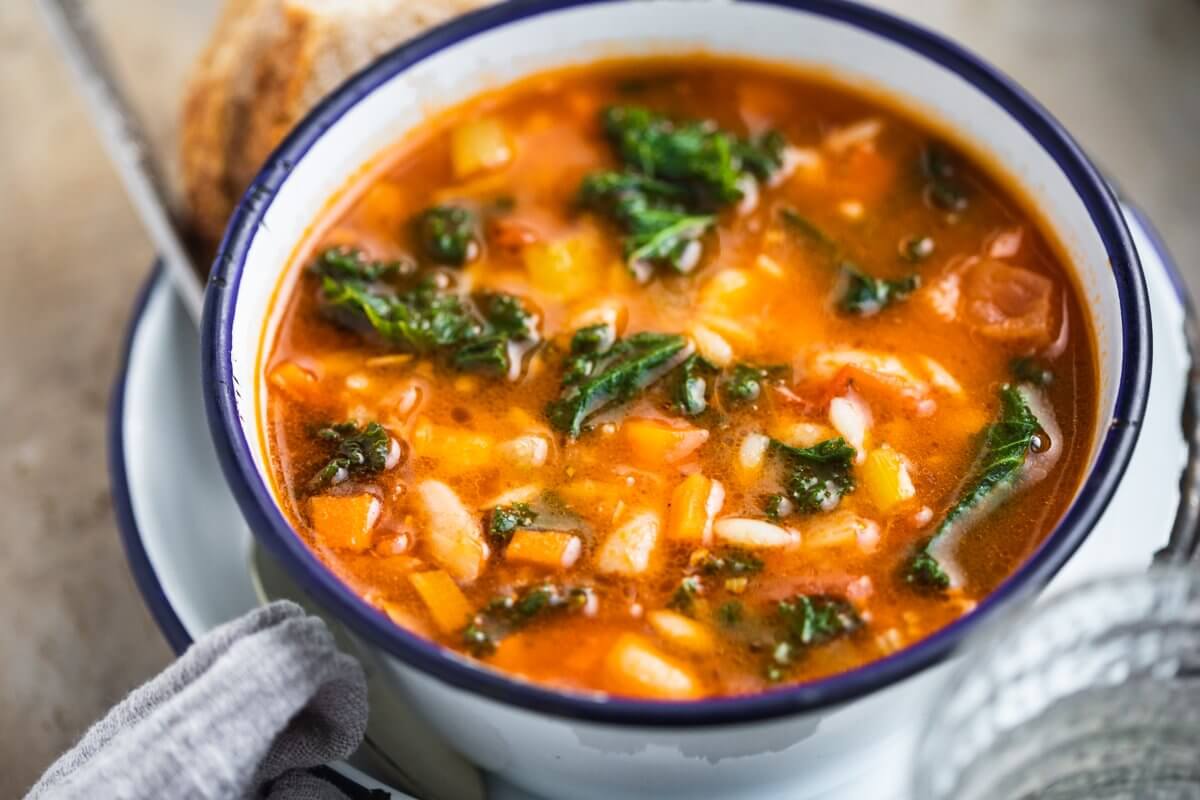

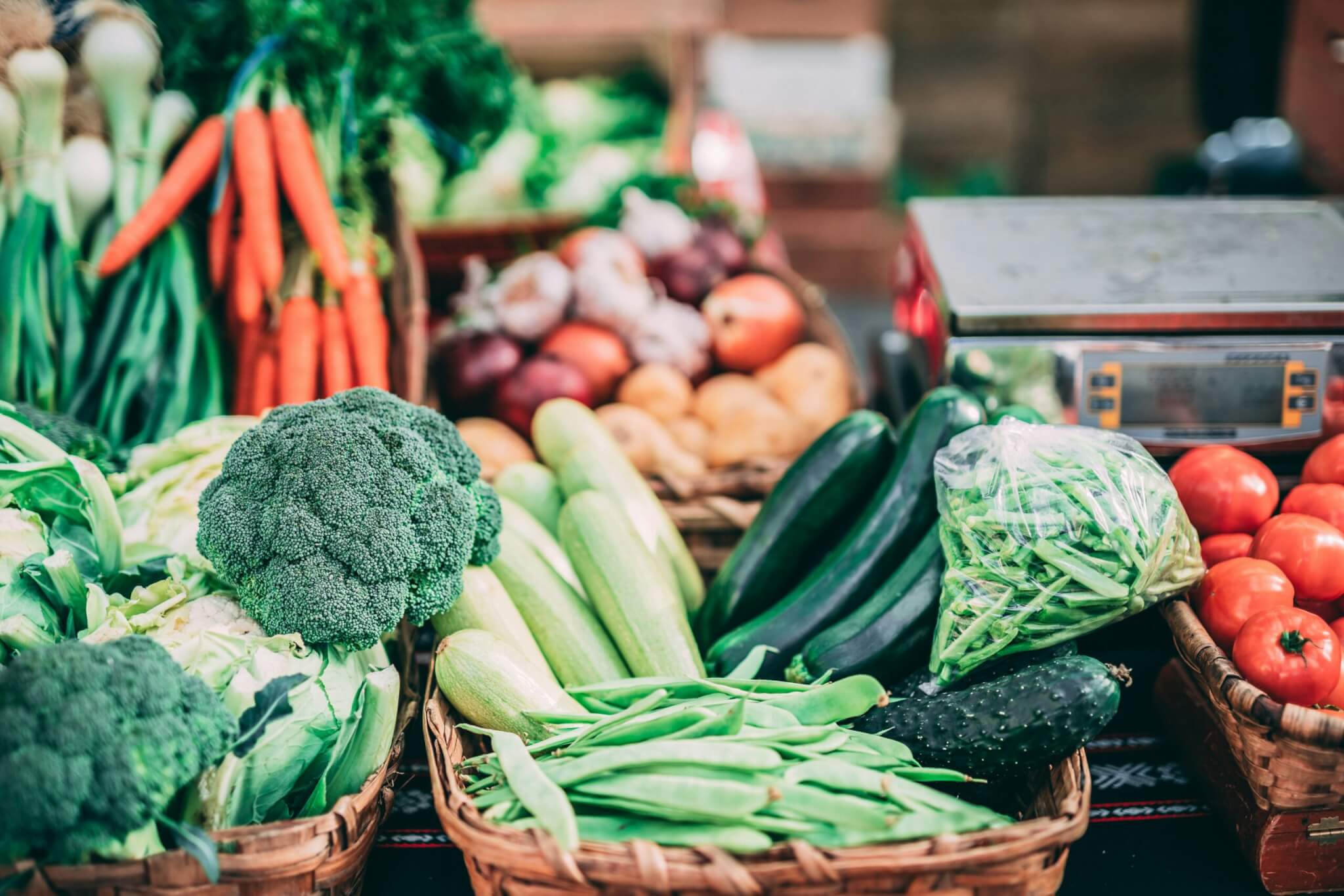




Couldn’t agree more.
I was an unenthusiastic salad eater till Nigella put me onto carrots and unsalted peanuts. They are now the basis of many of my salads. Lunch is usually soup or salad and this means we eat carrots all year round. Still can’t enthuse about kohlrabi though, but it’s not too offensive in a slaw or with other (more tasty) roast veg.
Also.
I’ve tried to get an answer to this out of Riverford and the Guardian.
Where have all the dried beans gone?
They used to be a cheap staple, but they’re now as rare as a thinking Tory MP.
I object to buying tinned because it’s so simple to cook them.
I get dried beans, pulses, seeds from Grapetree or try Holland & Barrett or try any local Wholefood Store. I agree – less carbon footprint than tinned. Just needs a bit of planning to soak & cook them before adding to your recipe.
I’ve tried both Grapetree and H&B in my local town and have spoken to the shop assistants. They both said that they don’t get dried beans delivered any more (except H&B had fava beans, but they seem to be better in soups). They didn’t know why. I occasionally see up-market beans but memories of £1.20 for 500g mixed beans in Waitrose still lingers.
For beans Grape Tree is really good and they also do generous sized packets of what I’d call ‘staple’ herbs and spices such as coriander seeds and oregano. Try the ‘World Foods’ sections of larger supermarkets – you can often find 2kg bags of dried chick peas and red lentils.
I use Wholefoods Online for dried goods; excellent quality; mostly organic.
One of my issues is that, if I buy a cauliflower, I’m eating it for the week. I know I can play with it and surround it with other veg, but it’s still a cauli. I wish you’d do recipe boxes for one, enabling more variety without waste.
I agree, I have a box every 3rd week, but I finish up with too many potatoes and have to be almost vegetarian to use everything. I spend a lot of time searching for recipes to use the box contents though!
I’m another solitary person using a box for two, and find that I usually have to discard most of the outer leaves of greens and lettuces, because they’ve gone over by the time I’ve got round to using them.
But once you’ve got rid of the outer leaves of a cauliflower, which have probably gone yellow by the time you get round to cooking it, you can make lots of lovely things. I make a proper white sauce in bulk (flour, butter & milk; or flour, marg and plant milk), and use it in several ways. Having cooked the cauli florets, you can mix half of them (depending on the size of the head) with several other things, like fried diced potato, hard boiled egg chopped up, and diced corned beef, and toss them all together in a warm bowl with with half the seasoned white sauce, and zap in the microwave to get it all nicely heated again. Next day you can use the other half of the cooked cauli and sauce, heat them with some organic chicken carcase stock and liquidise them, to make a delicious soup. There’ll possibly be enough for you to put half of it in the fridge for the following day.